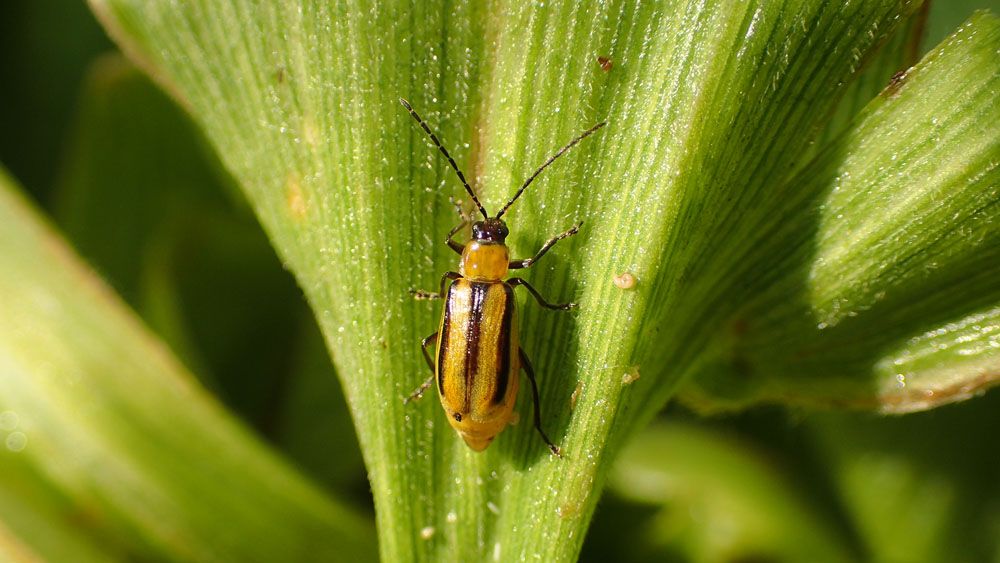
Western Corn Rootworm – Diabrotica virgifera vigifera
Western Corn Rootworm – Diabrotica virgifera vigifera
Scientific name: Diabrotica virgifera virgifera
Common name: Western corn rootworm
Appearance: Western corn rootworm is a small, greenish-yellow worm with a dark head and yellow elytra. The elytra features characteristic dark stripes along with yellow or bronze legs. Female rootworms are larger than males and have more pronounced stripes on their backs. The males are smaller, darker, and have longer antennae and legs. Larval forms of the western corn rootworms are initially white and turn brown as they progress. They also have brown markings on the last abdominal segment, making them appear double-headed.
Host plants or food: Western corn rootworms feed mainly on corn and occasionally other grasses, such as yellow foxtail and maize.
Territory: Throughout North America
Mode of damage: Western corn rootworms have chewing mouthparts and feed on foliage, kernels, cornsilk, and pollen. The larvae prefer feeding on roots, causing severe root rot.
Habits and life history
Western corn rootworms are usually found in corn-growing areas and are the most active from late June to late October.
Male rootworms appear before the females.
Female rootworms lay approximately 300 to 400 eggs on the upper layer of the soil during the summer. The larvae hatch from the eggs and feed on the corn and maize roots.
The larvae pupate in the soil and emerge as adults in July or August.
They only produce one generation in a year.
